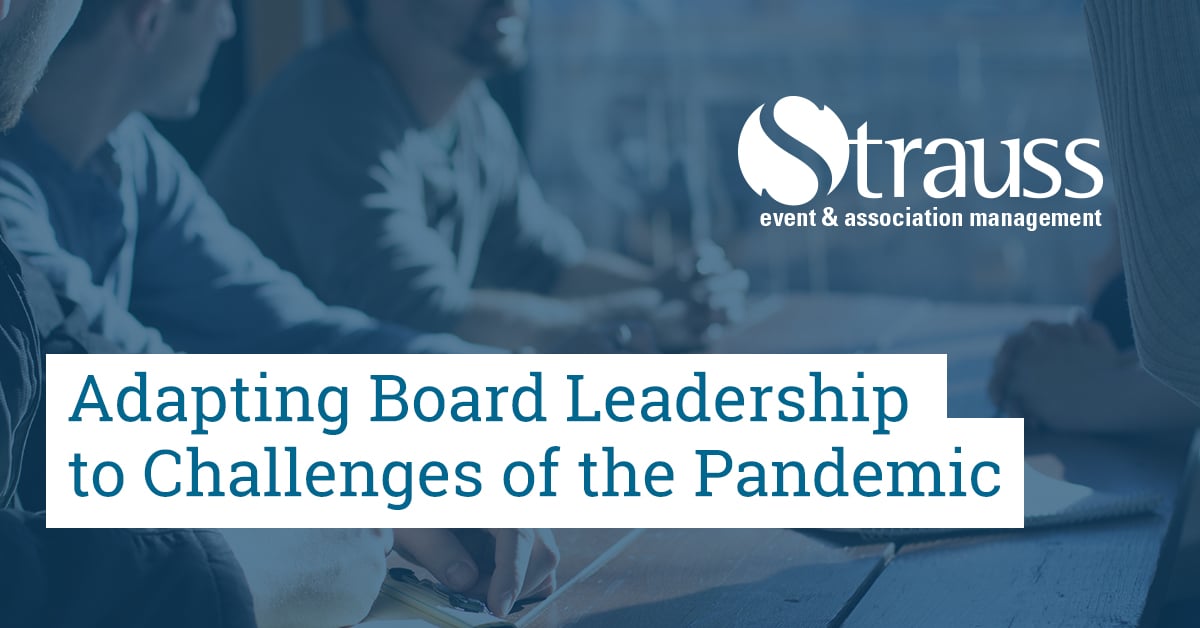The last 14-months have felt more like a daily one-hundred-meter dash rather than a marathon. While I am no runner, I prefer the steady pace of a marathon. But, like most association leaders, I can handle the occasional sprint.
During the pandemic, we have missed the personal connections and relationships that are vital to a productive association board and, frankly, what makes the volunteering experience enjoyable. In the early days of the pandemic, everyone was on edge. For the most part, everyone was impacted in the same way – we were all scared and overwhelmed. This put all directors on a level playing field. But now, over a year into it, playing fields are not even and a lot of changed.
This article will address the ways in which associations leaders should approach directors with more or less time than before. Everyone has now been affected differently by the pandemic. Whether they lost their job or gained more responsibilities, priorities and duties have likely shifted. With a little harmony and balance from all parties, the workloads of each volunteer board member can be exactly what they are currently willing and able to take on. Read Work Balance—How to Work Hard and Avoid Burning Out as an Association Volunteer Leader for more volunteer leader guidance.
A Shift in Perspective
As it became clear that this pandemic wouldn’t pass in a few months, the situations we found ourselves in changed. For those most negatively impacted, personally or professionally, their ability to commit as a volunteer director changed. This also brought the change in ability to commit and engage, and, in some cases, perspectives and attitudes changed. The views of association leaders who are employees versus those who were employers became more divergent. Regional differences based on local impacts of the pandemic had a noticeable effect on national associations and their board members.
Some aspiring officers came to realize that the impacts of the pandemic on their own business meant that being Chair of the board in the next two or three years was not realistic. Others who found themselves with more time on their hands have stepped-up to do more. These changes can be positive, but all have negative consequences. Learn How Association Leaders Can Boost Morale During a Pandemic in the previous article.
For the director who no longer aspired to be Chair, how does the current chair keep them engaged? How does the chair ensure that the director who now has time to propose and take on many new projects does not get distracted from the long-term focus and goals of the association?
Leading with an Understanding Eye
Good leaders need to recognize when someone needs help. Acknowledging that a fellow volunteer may need to shift their focus from the board to their own business for a period can build long-term commitment and certainly shows empathy. Allowing a director to reduce their commitment without feeling the need to resign is a good option for some, but in other situations giving someone ‘permission’ to resign may be just what they need.
For the super-keen, ‘I have lots of time on my hands’ director, politely remind them that not everyone has the time they do, and that the association has a strategic plan for a reason. Chairs should never be afraid to point back to the strategic plan as the roadmap that to followed. Strategic priorities can change, but that requires more than a moment of thought. For volunteers that have extra time available, look at how they can reduce the workload of others who may be currently facing challenges outside of their board work.
While the crisis of today may require a sprint, in order to be successful in the long-term, associations and boards need to stick to their strategic goals and priorities and keep all directors engaged. The pandemic will come to an end. Therefore, we must ensure that the great leaders at the board table are working together towards common goals.

